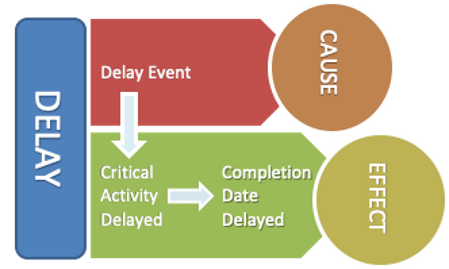The impact of the COVID-19 has been far-reaching, not only on the health and well-being of society but also on different spheres of the business sector. The construction industry is no exception and has not escaped the havoc created by the pandemic.
In uncertain times, it is necessary to have a strategy to minimize risk. To manage the risk it is important for contractors to protect any entitlement to additional time and cost that might exist and for owners not to be unjustly burdened with risk not owned by them.
In the midst of this unprecedented pandemic many of us involved in the construction industry are contemplating:
- Who is responsible for damages suffered as a result of COVID-19 and what should I do to mitigate risk?
- Can the contractor claim for additional time and cost due to the impact of COVID-19?
This article answers these questions and provides guidance on steps to be taken to mitigate risk.
Step 1 – Know The Contracts
One of the key considerations, when an unexpected event like the COVID-19 pandemic occurs, is the allocation of risk or in other words, who is responsible for damages suffered? A starting point is to immediately consult the following documents: (1) the construction contract and (2) any relevant insurance agreements.
Construction contracts typically deal with possible risks events, like the occurrence of a pandemic in two ways: (1) a direct approach and (2) an indirect approach.
Direct Approach
Contracts following the direct approach would have specific contract provisions dealing with the occurrence of a risk event. If the risk event is a pandemic the contract will stipulate the approach to be taken when the event occurs. Comprehensive contract provisions will deal with issues like the contractor’s entitlement to additional time and cost for delays, the suspension of work, and the right to cancel the contract.
Pandemics can be dealt with by a stand-alone clause on pandemics or alternatively by mentioning the outbreak of a pandemic in the Force Majeure clause. Construction contracts seldom directly address the occurrence of pandemics. The main reason is that until the COVID-19 pandemic, construction projects were seldom impacted by virus outbreaks.
Indirect Approach
The inherent uncertainty embedded in the execution of construction projects has led to the development of a contract mechanism to deal with uncertain events. Most construction contracts include a “catch-all” provision to deal with unpredictable risk events. The motivation for including this type of provision is to ensure that all risk events can be addressed by means of the contract and to avoid the uncertainty created by utilizing means outside the contract provisions like the common law to address it.
“Catch-all” provisions in contracts are normally influenced by the definition of the term excusable delay and would typically include phrases like “delays caused by events beyond the control of the contract parties.” This leaves the door open to deal with the impact of a pandemic as an excusable delay.
Contract Examples
The International Federation of Consulting Engineers (FIDIC) Red Book is an example of a form contract that follows a direct approach. The FIDIC includes Force Majeure provisions that can be utilized in the event of the occurrence of a pandemic.
Other popular form contracts, like the AIA A201 General Conditions, follow an indirect approach. No Force Majeure provisions are included in the AIA suite of contracts but the occurrence of risk events is addressed by means of an excusable delay provision. The indirect approach followed by the AIA A201 provides for risk events, like the occurrence of a pandemic to be dealt with as an excusable delay.
Contracts differ in relation to the payment of time-related costs in Force Majeure events. One view is that these events are a shared risk providing a right to additional time to the contractor but not the right to time-related cost.
All insurance agreements should be reviewed to determine whether damages as a result of a pandemic are covered.
STEP 2 – Follow the Provisions in the Contract
Once it is established that an entitlement exists for additional time, it is of paramount importance that the provisions in the contract to enforce this entitlement should be followed to the letter. Timeous notification to the other contract party of the impact of COVID-19 on the construction process is critical. Many contracts have a strict time provision or a time bar for the contractor to notify the owner when a delay event occurs.
Communication during times of uncertainty is key. Even though the impact might be insignificant it is still advisable to notify the other party in the contract agreement. The notification does not only protect entitlement but also provides an opportunity for the other party to act to minimize the impact of the delay. Notification clauses are strictly enforced because non-compliance takes away the opportunity of the other contact party to act to minimize risk.
STEP 3 – Records, Records, Records
For delay claims to be successful the cause and effect of the specific delay event should be shown. The following diagram explains this concept:

Claims should provide evidence that a specific cause (COVID-19) affected a critical activity that will result in a delay to completion. Records of the cause and effect of the delay are extremely important. Records that will be useful for COVID-19 claims are, for example:
- Official government directives issued that directly impact the execution of construction, for example, a directive to stop construction work.
- Official government directives issued that indirectly impact the execution of construction, for example, social distance regulations that will prevent construction workers to work together to execute activities or the transport of workers to and from the job site.
- Any notices or records of disruptions in the supply chain, for example, construction material suppliers that are closed or deliveries that are delayed.
- Documentation and records providing evidence of the effect on specific construction activities. These records can take many different forms: site diaries / daily reports; emails to suppliers, sub-contractors and other role players; meeting minutes; dated photographs; material delivery records and schedule updates
- Records of mitigating measures taken. Many contracts require action to be taken to mitigate delays as a prerequisite for claims to be successful. These efforts should be documented and recorded to be submitted as part of future claims.
STEP 4 – Collaborate
In any crisis event collaboration is key. The impact of COVID-19 on society and business is unprecedented. Although social distancing might create the perception that we are in this alone, we should not forget that only through unity and solidarity we will prevail. To complete projects successfully in this challenging time all project participants will have to work together as one team. This is only possible when we have a strong focus on communication. Regular project meetings should not be canceled but should continue online. Specific meetings to deal with the impact of COVID-19 should take place on a regular basis. An adversarial approach to deal with the impact and the division of risk during this challenging time will be counterproductive. Only when we come together to collaborate to take on the uncertainty and challenges we will make progress on the road to success.
This article was originally published by Xpera Group which is now part of The Vertex Companies, LLC.



